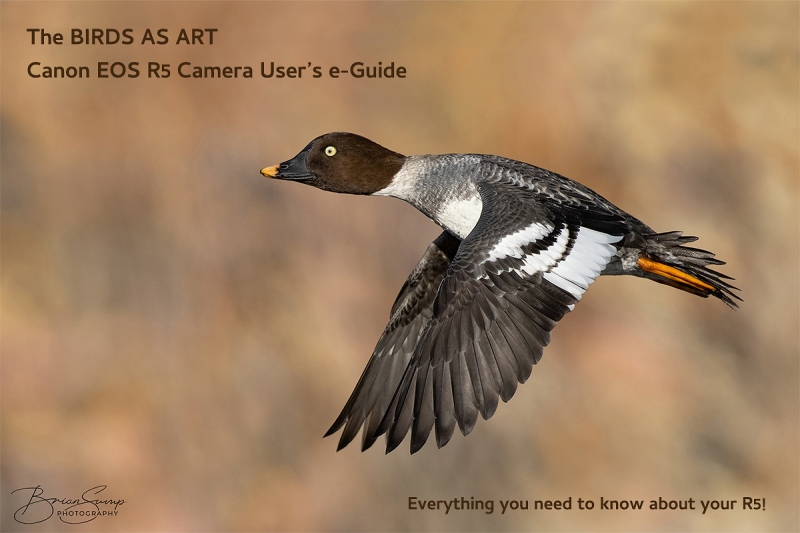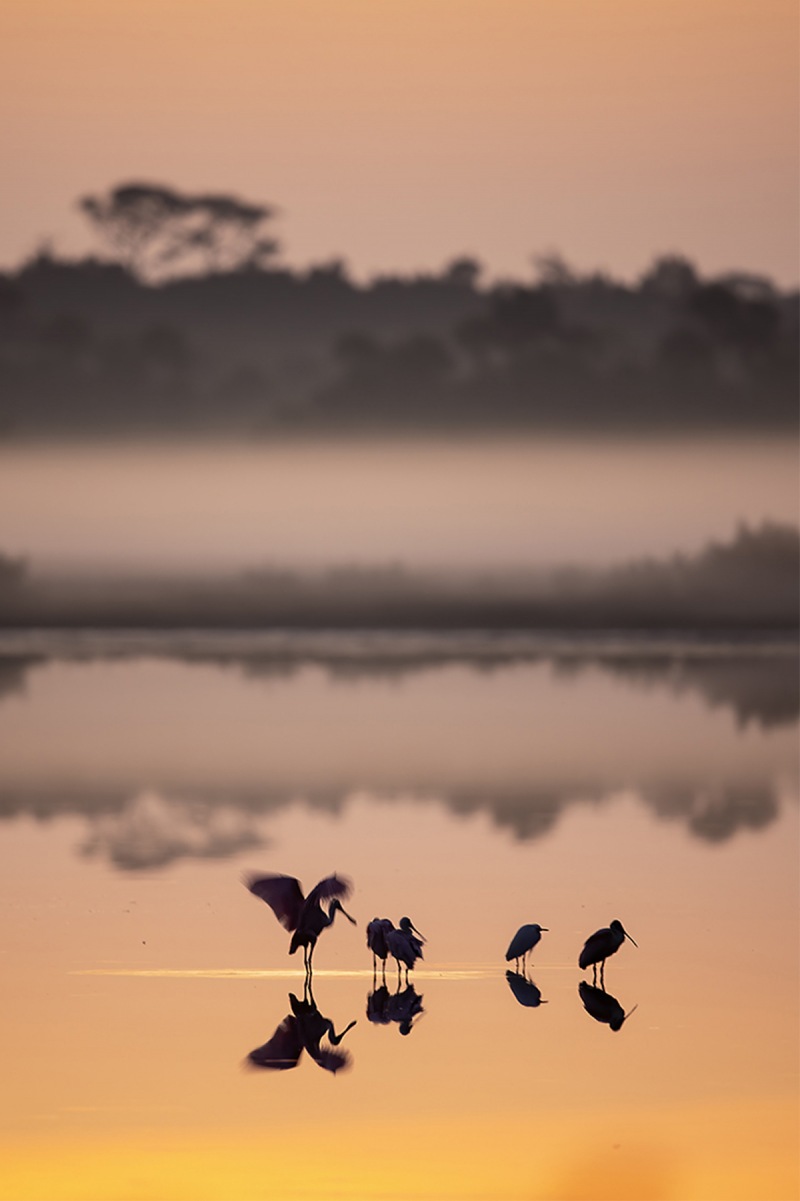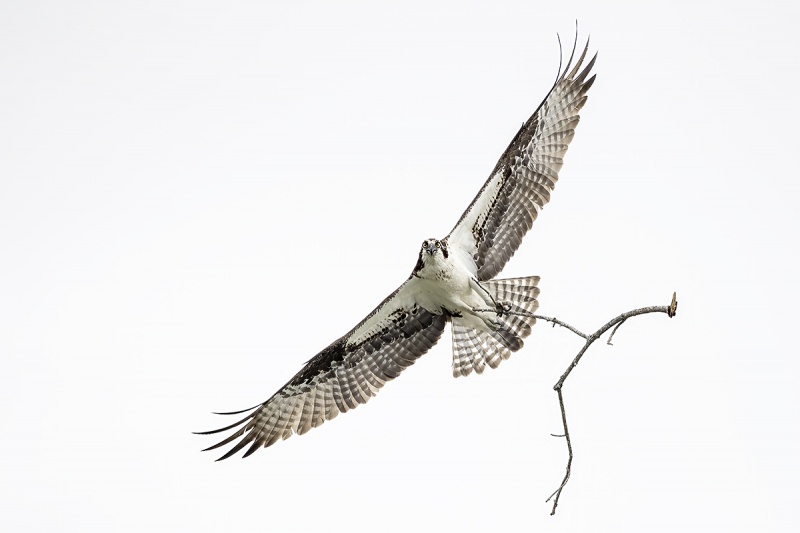What’s Up?
I am thrilled that the BIRDS AS ART Canon EOS R5 Camera User’s e-Guide is now finished. Whew! Tomorrow, we will be sending out the link to the final PDF (and the link to the video) to all who have purchased the guide or earned a free or discounted copy by using a BAA affiliate link. The last two days were cool and grey and I never even thought about picking up a lens. I did take a nice walk and a swim both days.
Fort DeSoto ITF veteran Joe Usewicz is joining me for a Stick Marsh session on Wednesday morning. BPN/Brian Sump-friend Vaughn Larsen will be joining me on Friday morning. And the M&M boys, Morris Herstein and Mike Gotthelf, have signed up for a two-morning/one afternoon private session at Stick Marsh in early April.
Today is Tuesday 23 March and it is very foggy here at ILE. As I still have a ton of work to do I am not going anywhere.
Wherever you are and whatever you are doing, I hope that you have a great day.
This blog post took about 2 hours (and 3 1/2 months!) to prepare and makes ninety-one days in a row with a new one. Please remember to use my B&H affiliate links or to save money at Bedfords by using the BIRDSASART discount code at checkout. Doing either often earns you free guides or discounts.
|
|
|
Cover Image courtesy of and Copyright 2021 Brian Sump (Sump scores!) The BIRDS AS ART Canon EOS R5 Camera User’s e-Guide |
The BIRDS AS ART Canon EOS R5 Camera User’s e-Guide: $75.00
The guide is 82 pages long: 21,458 words. More than 50 DPP 4 Autofocus-depicting screen captures. And a 31 minute 44 second educational video. This guide took three and a half months of hard work and a ton of help from at least seventeen very helpful and generous folks.
The guide covers — in great detail — all Menu Items that are relevant to bird, nature, and wildlife photography. It does not cover video. The section on AF methods and the AF Gallery has been expanded from the R5/R6 AF e-guide. It remains the one of the great strengths of this guide. I share my thoughts on what I am sure is the single best AF Method for photographing birds in flight. As most of you know, the guide includes a simple and easy way to change AF Methods that was introduced to me by Geoff Newhouse. In the AF Gallery you will see exactly how Face Detection plus Tracking AF works. In the Educational R5 Gallery video, I share my favorite R5 images along with dozens of bird photography tips and techniques.
In addition, I teach you how to get the best exposures with your R5. Detailed instructions on using the great In-camera HDR and Multiple Exposure features will be appreciated by creative folks who like to have fun. The three shutter modes are explained in detail as well. Bruce Dudek solved the can’t-get-to-Auto ISO problem that had stumped everyone at Canon. This information is of course shared in the guide. You will learn how to set up your EVF (Electronic Viewfinder) and Screen toggle options. Not to mention that the mysterious performance of the Q Button is revealed and simplified. Brian Sump’s images reveal how well you can do when using the R5 with EF lenses using one of the three Canon EF-EOS R Mount Adapters (as Donna did with Image #1 below). You will learn how I use Customize Dials to put either ISO or EC on the Thumb Dial and how to set up and save Custom Shooting Modes (C1-C3) that can remember both your Customize Dial and Customize Button settings! That is something that none of the SONY bodies do. 🙁 Near the end of the guide I share my all-important MY MENU items with you.
Like all BAA educational materials, the R5 guide is written in my informal, easy-to-follow style. I am quite proud of this guide and look forward to hearing your thoughts on our hard work.
You can purchase your copy of the BIRDS AS ART Canon EOS R5 Camera User’s e-Guide for $75.00 here in the BAA Online Store or by calling Jim in the office weekday afternoons at 863-692-0906 with your credit card in hand.
From Luis Grunauer via e-mail
I’ve watched the R5 gallery video. I LOVE THE PHOTOS and the stories behind them, not to mention that the EXIF data is displayed in Photo Mechanic. Your explanations of the settings and the processes are very helpful. Your comments on framing and composition (both the great ones and the ones you refer to as “created by operator error”) were enlightening. It gives folks a chance to learn from someone with lots of in-the-field hands on experience with the R5! Well done and thanks so much for sharing it with me. There is some awesome teaching in the video to say the least!
From Ron Santini via e-mail
I have an R5 and purchased your “The BAA R5/R6 AF Guide” about a month ago. It has been a game-changer for me. I previously used back button focus (BBF), but after following your guide, that is a thing of the past. You truly simplified the process and I just want to thank you.
|
|
|
This image was created on 15 March 2021 by Donna Bourdon on the Merritt Island NWR IPT. She used the Induro GIT 304L/Mongoose M3.6-mounted Canon EF 600mm f/4l IS II lens (now replaced by the Canon EF 600mm f/4L IS III USM lens) with the Canon Control Ring Mount Adapter EF-EOS R and the highly touted Canon EOS R5 Mirrorless Digital Camera. Auto ISO set ISO 250. Evaluative metering +2/3 stop: 1/15 sec. at f/4 in Tv (Shutter Priority) mode. AWB at 7:08am on a misty morning just before the sun came up. Click in the image to see a version that fits in your browser window. Image courtesy of and Copyright 2021: Donna Bourdon
|
Donna Bourdon and the R5
Donna Bourdon, her friend Beverly Still, and I have been friends for almost a decade. Donna (and often Bev) have been on many IPTs including Old Car City — the first one after I spoke at her camera club in Chattanooga, TN, Bosque del Apache, the UK Puffins, a Bear Boat trip, a land-based Falklands trip, Japan in Winter, Fort DeSoto, Merritt Island, and the Homer Bald Eagle IPT (when she managed to show up ten minutes before the first sailing!) Many of Donna’s early IPTs were co-led by my friend Denise Ippolito.
Donna had been planning to visit my home at ILE before the Merritt Island NWR IPT for several months in hopes of photographing some crane chicks and colts. Three of the four that hatched well before she arrived expired in February or early March. Though she did get a few images of the surviving colt, we did lots of other great stuff, much of it on Clemens Van der Werf’s flats boat. And we enjoyed several fine meals on the pool deck!
Right before she flew down, I convinced her that she needed to own a Canon R5. Steve Elkins kindly shipped her new body to my house just before she arrived. Donna had been playing with the SONY 200-600 and an a9 ii for a while (also at my urging), but after using the R5 she is considering selling her SONY stuff … In part because she has a big investment in Canon glass.
Donna got to ILE on the afternoon of 10 March. I had charged her R5 battery so that we were able to spend several hours setting up her new camera with my laptop opened to the then-still-in-progress R5 guide. We headed out for sunset at ILE and Donna was well on her way to loving her R5.
Donna has always been a good student. With Image #1, she turned to one my oft-taught pre-dawn/low light/pleasing blur techniques: Tv mode with Auto ISO and Exposure Compensation (EC) on the Thumb Dial. One of the great things about the R5 is that you can save your Customize Dial and Customize Button settings with a Custom Shooting Mode (C1-C3). We set up her camera with my C1, C2, and C3 Custom Shooting Modes. She opted to go with the classic blur speed of 1/15 sec. I love the degree of blurring in Image #1. In addition, I love the compositional balance with the flock of spoonies on the right balancing the tall tree in the upper left.
Donna is a huge FBM (FaceBook Maniac). She posts very often and would love to have you as a friend. You can see more of her work on her FB page here or here on Instagram.
Donna is recently retired from her job as a hospital administrator so that she can maximize her photographic opportunities. She had so much fun on her last visit that she is returning to Florida soon to join me on the second DsSoto IPT.
|
|
|
This image was created on 19 March 2021 by Donna Bourdon at Blythe’s Ferry near her home. She used the handheld Canon RF 100-500mm f/4.5-7.1L IS USM lens (at 472mm) and the highly touted 45MP Canon EOS R5 Mirrorless Digital camera body. ISO 2500. Exposure determined by test exposure & histogram and blinkies evaluation: 1/2000 second at f/7.1 (wide open) in Manual mode. AWB at 2:31pm on a cloudy afternoon. Face Detection plus Tracking worked perfectly. Click on the image to enjoy a larger version. Image #2: Osprey circling with nesting material |
Fly Softly and Carry a Big Stick!
With her R5 set up exactly as detailed in the BAA Canon EOS R5 Camera User’s e-Guide, Donna just loves her RF 100-500 for hand held flight photography. And she had lots of opportunities during her recent visit.
Focal Length Question
Why was it important that Donna zoomed out to 472mm with Image #2?
Typos
With all blog posts, feel free to e-mail or to leave a comment regarding any typos or errors.

















I love this photo; 472mm allows the entire Osprey with it’s building materials; any closer and the wing tip and the stick would have been clipped.
Good work Ken. You should be proud 🙂 Sometimes the very simplest answer is the best one.
with love, artie
Hi Artie
You taught Donna well Artie two quality Images I particular like #1 for it’s pictorial look almost
like a Japanese water colour and what kills it for me is the movement in the wing that just makes the picture. To give a still image movement raises the bar for me.
Best and love
Ken
This Osprey image brings back memories of Honeymoon Island several years ago and the incredible number of nesting pairs of Osprey along with a GHO nest.Ft DeSoto on April 20th
and then may try Honeymoon Island again.
Not sure about the 1-4, but many lenses are sharper just short of the max focal length, so just short may be better. Also, less danger of clipping a wing.
Great exposure.
Hey Guy, One out of two ain’t bad :). The old zoom out to increase sharpness adage does not apply to modern telephoto zooms. Most all are razor-sharp at the long end.
with love, a
at 472mm, it’s still f6.3 instead of f7.1 (for more than 472mm, up to 500mm)
This was probably a bad guess. The reported F stop is just a rounding to the nearest third of stop. Reviews have given this magic number as the point where the lens goes to F7.1, but the fact is that 473 or whatever the cutover point is is not significantly darker than at 472. The camera just shows a different F stop in the viewfinder. Perhaps the real reason it was set at 472 is that the lens is sharper just a bit short of full extension, as Guido says.